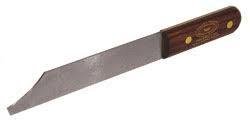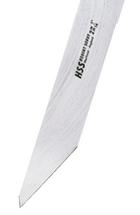This may be getting a little anal, but something of a mystery to me. I would like to have a thin parting tool, like the Firmager and it's kin. They aren't terribly expensive, but I have made a number of tools, that seems pretty simple to make, so I started looking for an HSS blank. All the catalogue descriptions I have seen describe pretty much ALL the tools I have run across as 1/16" thick, or 1.6mm. That's .0625". I can't find any HSS blanks in that thickness no matter what units I search under; A2, yes, but not HSS, all I can find is 2mm in the width and length required. I know .4mm isn't much to worry about and I could thin it out if I was very worried about it, but curious what is going on there... the manufacturers are finding 1.6mm. Or thinning it themselves, maybe.
Related question, I've also been thinking about a 1/8" parting tool, but if you have one at 1/16" (or 2mm), 1/8" is not much bigger..... would it be unnecessary if you have the thinner one, or do you still use the 1/8"?

Related question, I've also been thinking about a 1/8" parting tool, but if you have one at 1/16" (or 2mm), 1/8" is not much bigger..... would it be unnecessary if you have the thinner one, or do you still use the 1/8"?


